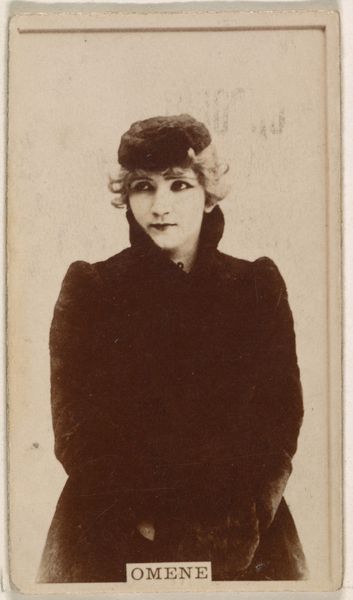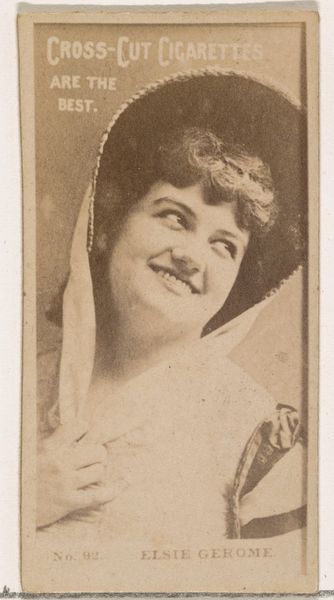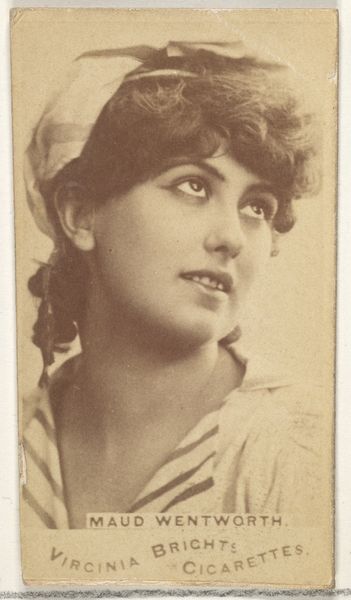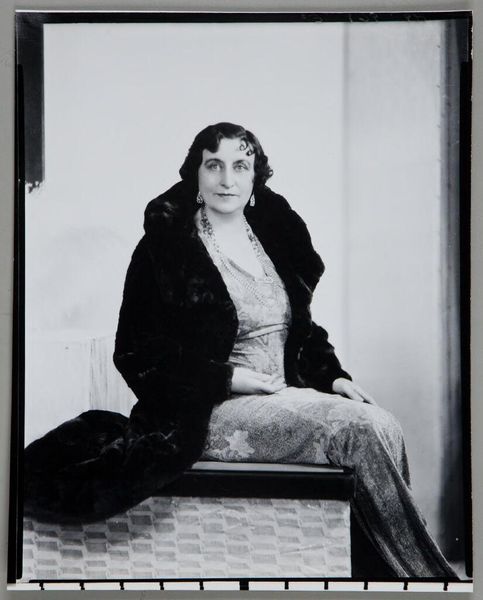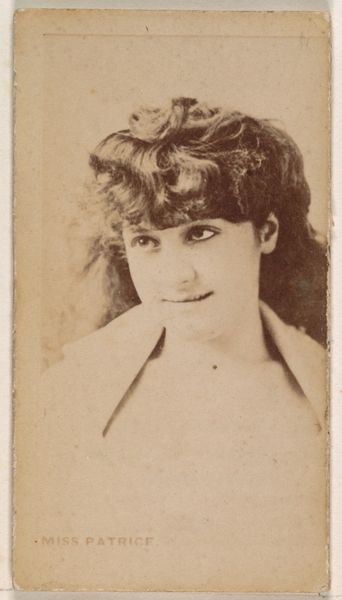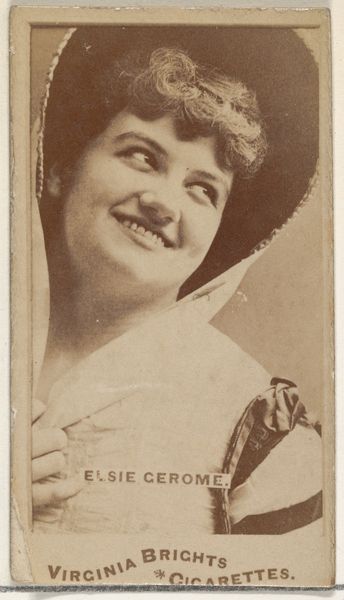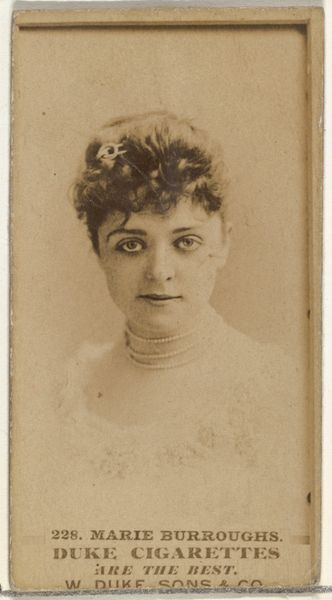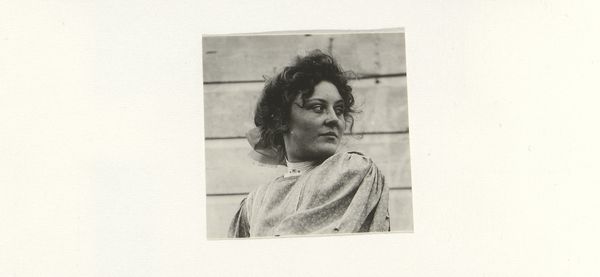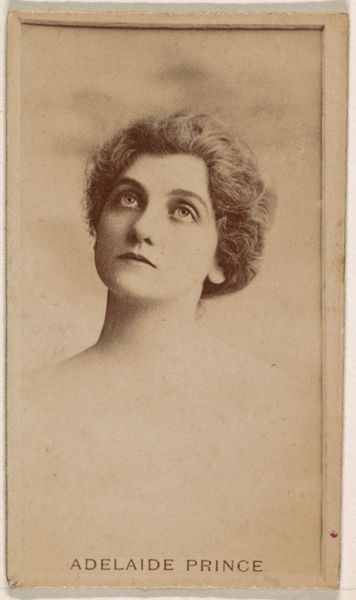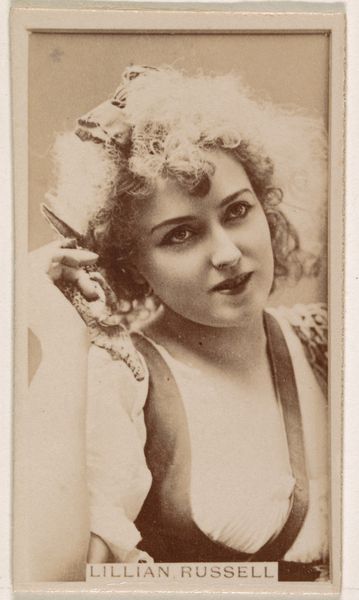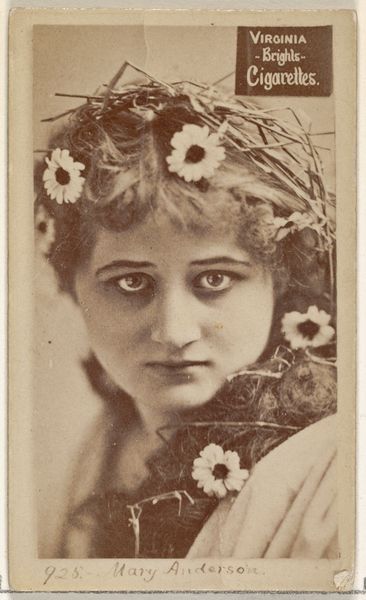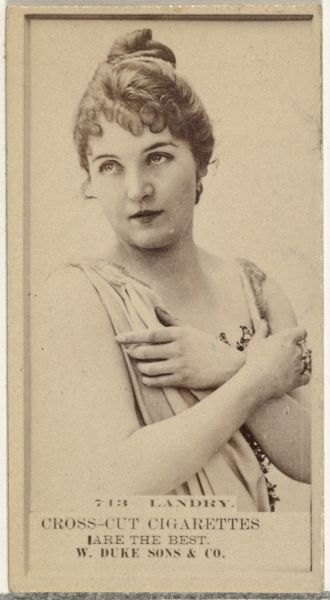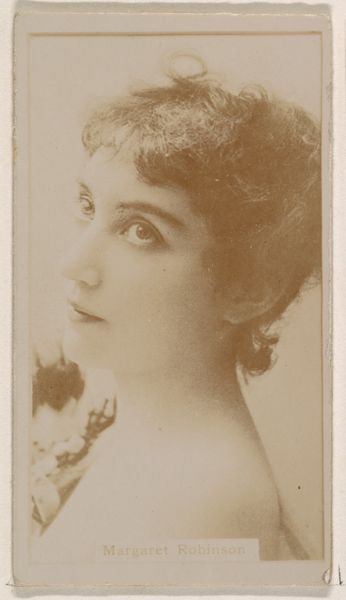
Dimensions: height 150 mm, width 110 mm, height 179 mm, width 130 mm
Copyright: Rijks Museum: Open Domain
Willem Witsen made this portrait of Lise Jordan using photography, a medium that democratized portraiture in the late 19th and early 20th centuries. Photography, as a relatively new medium, stood in an interesting relationship to the more established art institutions of the time. On the one hand, it made portraiture accessible to a wider range of social classes, challenging the traditional dominance of painted portraits, which were typically commissioned by the wealthy. On the other hand, photography also sought recognition as a legitimate art form within those same institutions. In this context, Witsen's photograph can be seen as both a product of and a commentary on the changing social landscape of artistic production and consumption. Further research into the cultural and economic conditions of the Netherlands at the time, as well as the history of photography's institutional acceptance, would undoubtedly enrich our understanding of this intriguing image.
Comments
rijksmuseum about 2 years ago
⋮
Around 1885, photography changed in a major way. New, portable handheld cameras made photography more immediate and spontaneous. Willem Witsen was inspired by the new possibilities when he took closeup photographs of the upcoming Dutch literary and artistic set known as the Tachtigers with their muses and models. In this portrait, artist’s model Lise Jordan is staring straight into the lens. Her face occupies the whole frame.
Join the conversation
Join millions of artists and users on Artera today and experience the ultimate creative platform.
